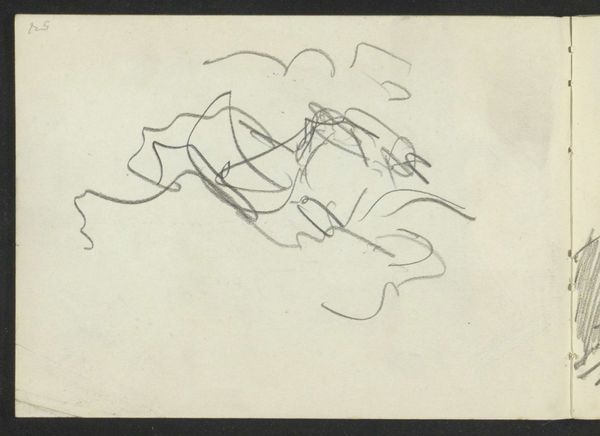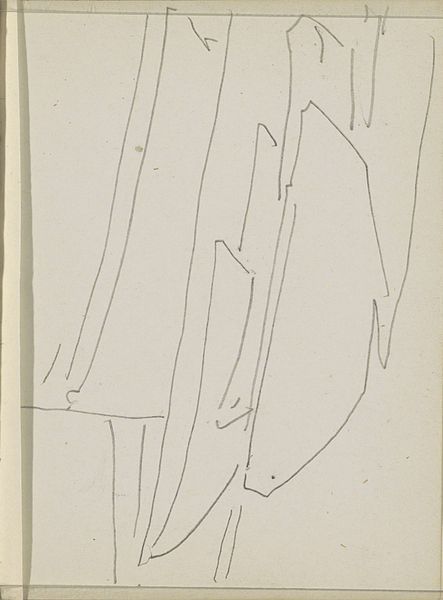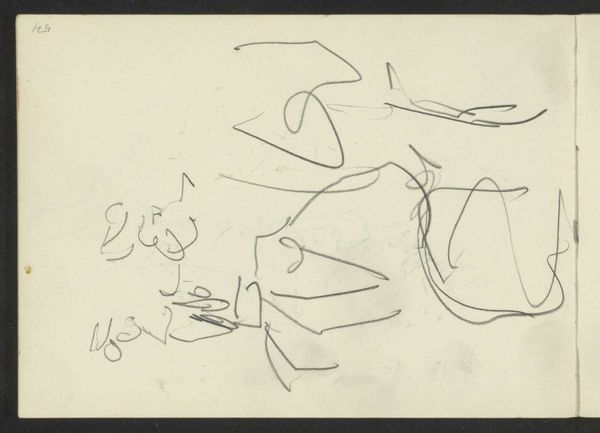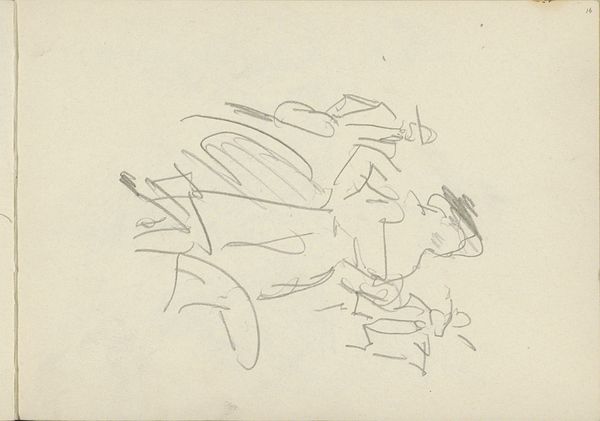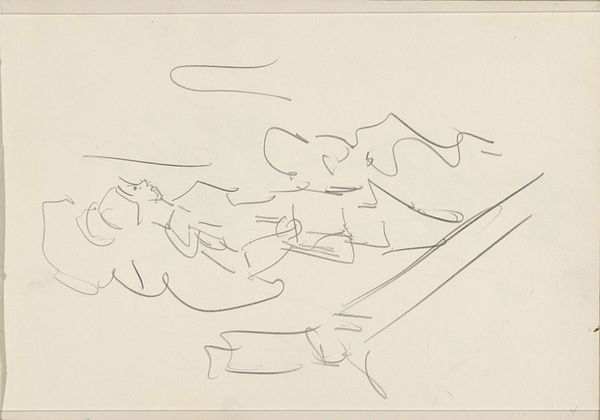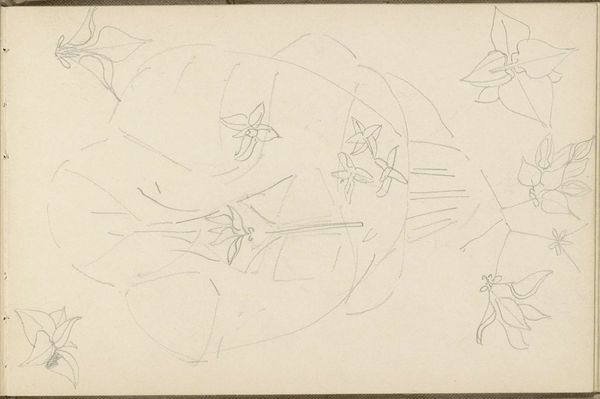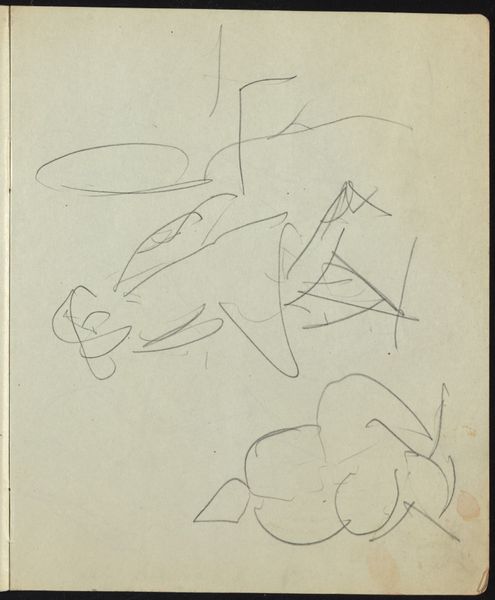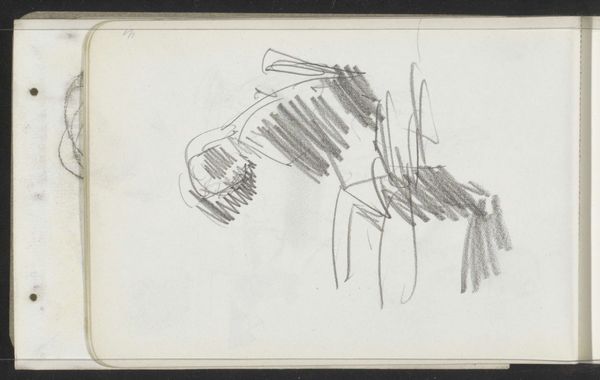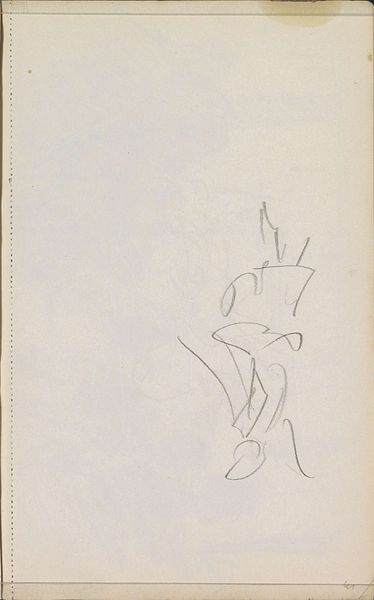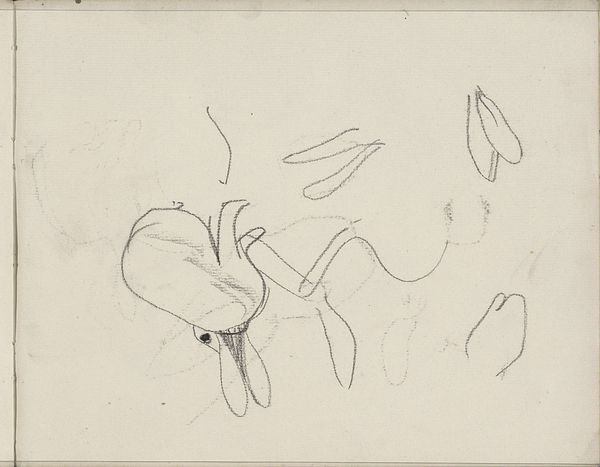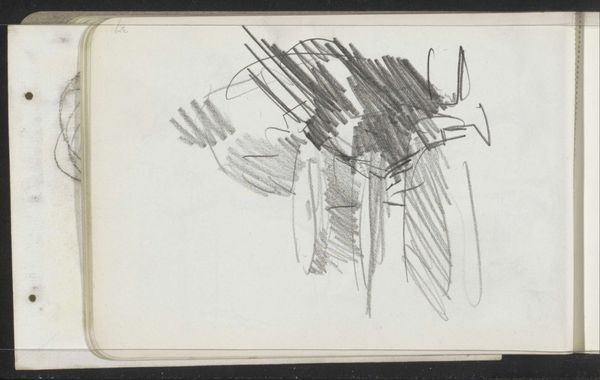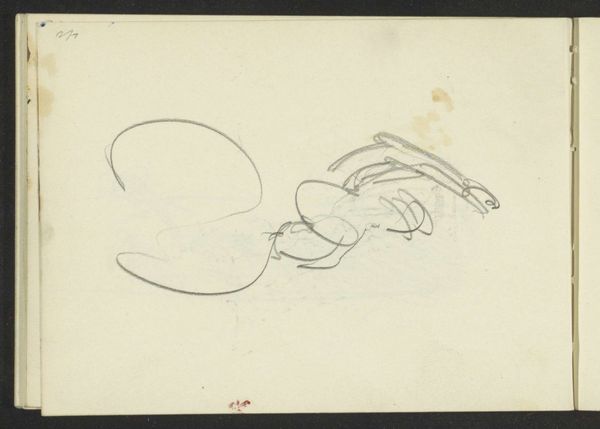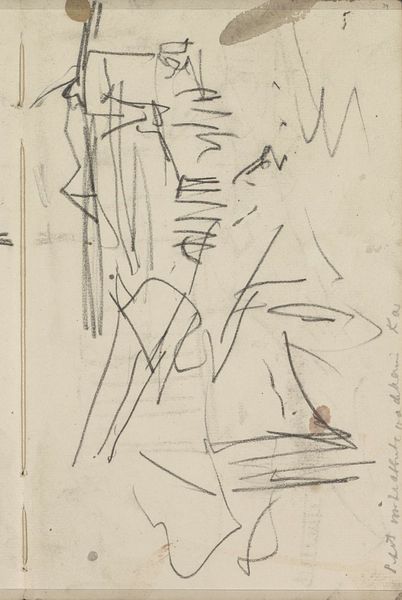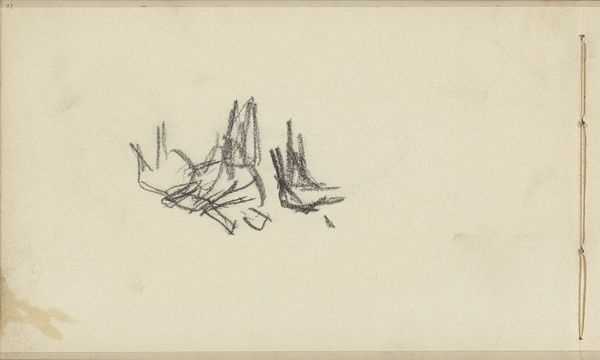
Copyright: Rijks Museum: Open Domain
Curator: Looking at this quick sketch, titled "Figuurstudies, mogelijk dansende vrouwen," or Figure Studies, Possibly Dancing Women, created between 1875 and 1934 by Isaac Israels, I'm struck by its sense of immediacy. Editor: Immediacy is right, it’s almost frantic! It feels like a fleeting thought, barely captured before it vanished. I can practically see the artist’s hand flying across the page. Curator: Exactly. Israels, associated with the Dutch Impressionist movement, often focused on capturing modern life and movement, and this sketch feels very much a part of that ethos. It is interesting to consider the role of dance in society, how it became this popular motif during the rise of industrial modernity, as dancers also entered the stage as laborers. Editor: Absolutely. And it’s all conveyed with the barest of means – what looks like graphite and pencil on paper. The lines are so economical, almost abstract, yet they hint at figures in motion, or at least the possibility of it. You have the impression of a spontaneous reaction, using accessible materials. Curator: One wonders what function these studies fulfilled for Israels. Were they preparatory sketches for a larger work, or simply exercises in capturing movement and form? Were they from a personal sketchbook or for a client? What kind of politics might have the sketch? Considering how many painters like Degas at this moment were representing dance as a form of modern art, how might these figures serve different communities of interests, desires and aesthetics? Editor: The beauty here lies in the process, wouldn’t you say? The quick strokes, the visible corrections…it reveals the artist grappling with form, working through his ideas in real time with just paper and readily available material. It offers a direct connection to Israels' artistic process. Curator: It's intriguing to consider how the drawing also engages the viewer in a creative partnership to the figure of labor. The sketch invites speculation, projecting our own ideas and expectations onto those ethereal marks on the page. The fact it's just sketches is why it endures. Editor: A beautiful example of how simplicity can be incredibly evocative. The rough work itself generates intrigue as well as imagination, right? Curator: Absolutely. It makes you wonder about the larger historical contexts, cultural influences, and artistic circles in which it was produced. Editor: And for me, I am thinking how it transforms simple materials into the energetic gesture. Thank you.
Comments
No comments
Be the first to comment and join the conversation on the ultimate creative platform.
